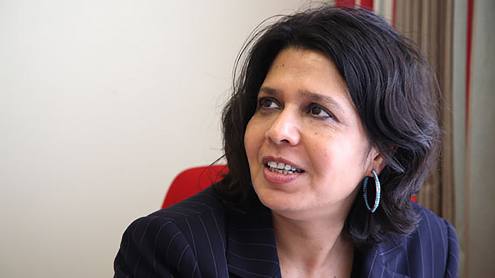I was having a fascinating discussion with a group of senior bankers about how to transition to digital. At the end of the session, I realised we had repeatedly been using four words that encapsulated the change: simplicity, design, analytics and experience.
Keep it simple
Simplicity is taking away much of the complexity we have built into banking. We may not even realise we do it, but we do. Two examples illustrate this well.
The first is the bland nature of most internet and mobile banking services. They provide customers purely with a transactional view of their spending. Often, it is just a list of transactions with balances, because that is how our systems were built years ago: to be a branch-based ledger system. This will not do in today’s world of rich, visualisation tools. Therefore, a new bank is being launched in Europe called Loot. The founder of the bank is a university drop-out who, when asked why he thinks a new bank is needed, states that it is because banks only tell you what you have spent, not what you are going to spend. His bank app shows young people their forward spending habits in a rich, visual way and, as a result, is gaining new accounts at a cost of less than €1 per user thanks to word of mouse.
Another example is ReceiptBank, an app that allows the user to take a photograph of any receipt, which is then automatically written into spreadsheet format, ready to upload for the user's accounting software. I love this service, but wonder why my business banker didn’t recommend it to me. Banks that focus upon simplifying services and giving more insight into financial habits will begin to differentiate.
That leads us to design. I first heard ‘design thinking’ in a banking context about four years ago, and was surprised to hear that terminology as, for most banking, design was never the focus. Functionality, efficiency and cost are the terms more frequently used, but design thinking? Then I saw design agencies appearing more and more in banks’ boardrooms, offering design thinking. The focus is again on how to take a simple process, and make it a better experience.
One example of such design thinking was the launch of the ‘Keep the Change’ savings programme for Bank of America. It is hard to save, but the bank worked with a design agency to create a simple savings scheme where, every time you spend, the change is rounded up and the difference put in your savings account. So, if you buy a cappuccino for $3.50, 50 cents are saved, or if your weekly grocery shop comes to $122.28 then 72 cents are put into your savings account. You get the idea. Again, it’s all about differentiating the bank through differential thinking.
A better experience
That leads to analytics. Banks that can drill down into their customer data and leverage that analysis will also gain an advantage. Right now, most banks think this means monetising the data, but it is not about that so much as improving the customer experience through contextual commerce. Knowing where the customer is and what they are doing is a key element, and several US banks now offer services where the customer gets a better deal through the bank.
For example, the bank analyses regular bill payments and, if the user is with a service provider that is more expensive than the alternatives, it will advise said user to switch provider. The bank looks at where the user shops most often and, if it sees that they have regular shopping habits, provides discounts and deals with preferred stores as a user browses their websites, apps or even walks past the storefront. That is far better service than the odd loyalty coupon in the post.
Finally, combining simplicity, design and analytics to give the best user experience for the customer is the ultimate objective. Right now, we can see this sort of capability being delivered in wealth management, where high-net-worth clients feel they receive personalised advice every time they open their investment app. They do not. The advice is based upon machine learning, but that capability is trickling down over time to every bank user, and it is all about simplicity, design, analytics and the user experience.
If a bank has a team on the case of these four foundations of digital relationships, then a customer can take comfort that it is heading in the right direction. If anyone working at a bank has not heard these four foundations being discussed in earnest, then start asking the tech team why they are missing a trick.
Chris Skinner is an independent financial commentator and chairman of the London-based Financial Services Club.






